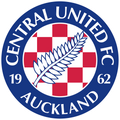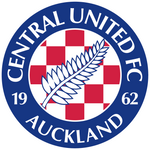History
Central Soccer Club came about in 1962, following the efforts of a group of young Dalmatian immigrants. They gathered together each weekend, seeking support from each other’s company, having been subjected to the twin torments of language difficulties and cultural differences at the respective places of employment during the week. Their passion for football, which remained with them despite having left their homeland, was the key to the club being formed.
Because the club had no junior teams, central played in the lowest senior grade for the first four years of the club’s existence, and consequently remained at that level, despite winning the championship on each occasion.
Throughout the 1970s, Central picked up four championships and six second placings, but the continued lack of junior teams within the club meant their efforts weren’t recognised by way of promotion to higher grades. However this situation was to change in the following decade, as Central, now with a junior section to their name, began their meteoric rise to the upper echelons of New Zealand soccer. They surged up through the Northern League grades rising from Division Four to the Premier League in a five year period from 1984. A hiccup was recorded in 1990, when Central were relegated back to Division One. One season later, Central proudly displayed the First Division championship in their trophy cabinet. This was followed up with third place in the 1992 Bluebird Northern Premier League, and promotion to the newly-created Winfield Superclub competition for 1993. In this, they finished fifth a more than satisfactory return from their first campaign amongst the “big boys”, and an obvious springboard from which to launch the clubs recent success.
Facilities
Initially, the club played their home games at either the Auckland Domain or the Oakley Ground in Waterview.
A move to a permanent home site came in 1965, when Freyberg Field, situated on the borders of the suburbs of Sandringham and Mt.Albert in Kiwitea Street, was made available for use as a football pitch, in spite of it being just forty-five metres wide.
The next quarter of a century saw Central increase the width of the pitch on three occasions, each time at club members’ personal expense.
The last such exercise took place in the late 1980s. After buying up adjoining properties, a massive timber retaining wall was erected, and 5000m3 of earth was removed.
Only six first-team games could be played at Kiwitea Street in 1992, due to its poor condition.
Following consultations with the Auckland City Council and the New Zealand Turf Culture Institute, a bold plan was implemented to develop an all-weather, sand carpeted pitch at Central — similar to those at Eden Park and the MCG – over a three-year period.
The first stage of the ambitious plan was implemented prior to the 1993 season’s commencement, and involved:
the installation of 1.3km of subsoil drains;
the installation of a fully computerised, automatic sprinkler system with 24 pop-up heads on the pitch;
2km of sand-slitting;
Prior to the 1994 season getting underway, the second stage of the project was completed. This entailed:
6km of sand-slitting;
extensive re-seeding;
280m3 of sand spread over the field;
the commencement of a long-term spraying programme to eradicate kikuyu and paspallum grasses.
The final completed cost of the upgrade is approximately $40,000, the funds having been generated from signs displayed around the pitch.
Further sand-carpeting work is required on the pitch before the upgrading of the Kiwitea Street surface is completed, but numerous coaches have been unanimous in their approval of Central’s efforts – “if you can’t play on that, you can’t play!” Is the most commonly expressed statement made by visiting team’s mentors prior to playing at Central.
As well as the pitch improvements, a host of other tasks involving improvements to facilities have been carried out in the last two seasons by a small but enthusiastic group of club members, most of whom did not miss a weekend during the summer months, when the following works were completed:
* new concrete drug-out;
* upgrading and painting of perimeter railing;
* terraced seating, for 250 people, on either side of the ground;
* painting of road-side fencing;
* painting and upgrading of the toilet and changing facilities;
* the laying of the paved forecourt and concrete pathway in front of the clubhouse,the pathway and auxiliary gates on Kiwitea Street;
* new carpet and curtains in the clubhouse;
* a newly created physio room, attached to the home team’s dressing room;
* repairs and upgrading of the practice area floodlighting;
* Levelling, returfing, sandslitting, carpeting and drainage work on the practice area.
Further activities to be carried out include the implementation of an of extensive landscaping plan to beautify the ground during 1994-95, in conjunction with the Auckland City Council.
The efforts of those responsible for making Central’s Kiwitea Street ground the impressive sight it now is cannot be praised highly enough. All the work has been carried out by hand, and funded by numerous club members, each of who shares in the club’s long- term goal, which is now coming to fruition-
-for Central Soccer Club to realise the on- field success its passionate following deserves, and, at the same time, be recognised and acknowledged accordingly by both the local and national soccer public.
Emerging from obscurity
Raise the subject of prominent soccer clubs in Auckand over the years and the likes of North Shore, Mt Wellington, Eastern Suburbs and Waitakere will, quite rightly, be amongst those meriting discussion.
One club unlikely to have been mentioned in past talks on the them is Central.
Had the Sandringham based club been referred to, their proponent is likely to have borne the brunt of several pairs of eyes focusing on him/her, closely followed by the collective question, “Who?”, and the subsequent change of subject.
Such a situation has been the bane of many a Central club member over the last thirty-two years.
Despite the inspired efforts of the club’s passionate followers, Central has lacked real credibility in footballing circles in the eyes of many of the game’s servants, mainly because of the club’s ethnic-based background.
But not any longer.
Central’s promotion to Winfield Superclub status for the 1993 season brought the club to the attention of soccer followers Auckland wide.
A year later, and it’s the turn of the rest of the nation’s footballing public to ask questions about the new breed rising north of the Bombay Hills, following Central’s qualification for the National Championship round of the Winfield Superclub.
Central have gone on to become Chatham Cup winners in 1997 and 1998.
They are also 1999 New Zealand Club Champions and represented New Zealand at the 1999 Oceania Club Chapionships where they reached the Semi-Finals.
– by Jeremy Ruane

